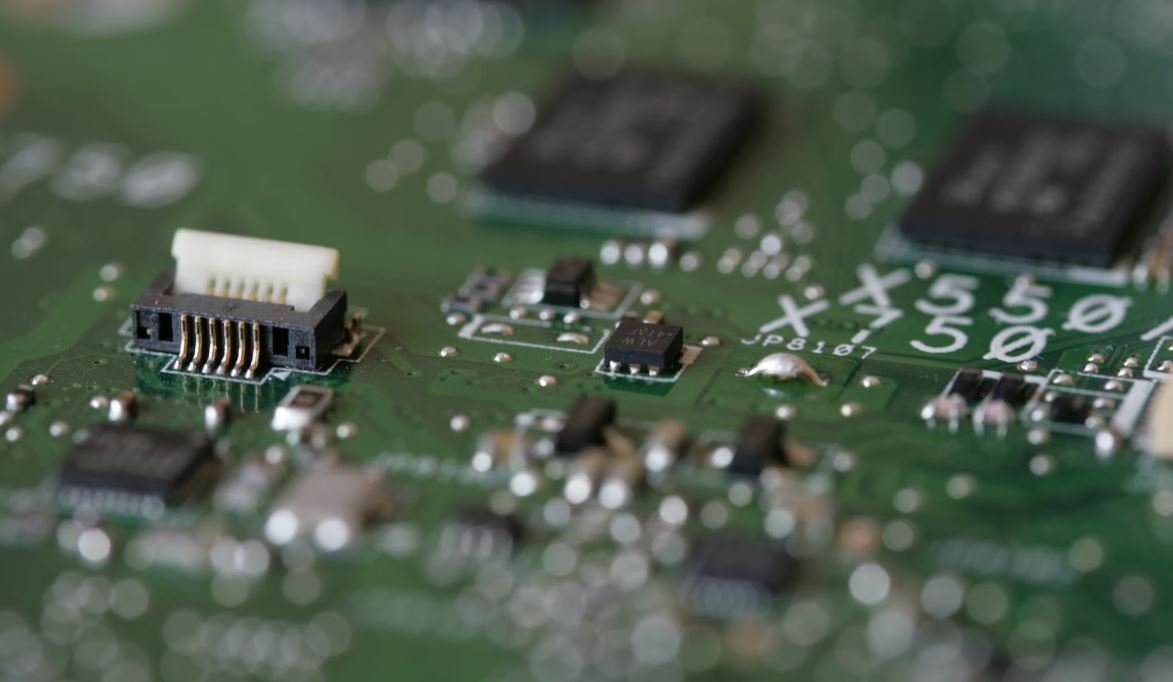Production and Decay of Strange Particles
Strange particles are a fascinating aspect of particle physics, adding a unique flavor to the Standard Model of particle physics. These particles contain strange quarks, which have characteristics that differentiate them from other quarks. In this article, we will explore the production and decay of strange particles and uncover some of the intriguing phenomena that arise from their behavior.
Key Takeaways:
- Strange particles contain strange quarks and contribute to our understanding of the Standard Model.
- Production of strange particles can occur through various processes in particle accelerators and cosmic rays.
- Decay of strange particles can give rise to different daughter particles, leading to a rich variety of experimental observations.
- The study of strange particles has contributed to the discovery of new particles and the development of theories in particle physics.
**Strange particles, which contain at least one strange quark, can be produced through energetic collisions of particles in accelerators or cosmic rays.** These collisions generate immense amounts of energy that can transform other quarks into strange quarks, resulting in the creation of strange particles. The production of strange particles provides scientists with valuable information about the properties and behavior of strange quarks.
**The decay of strange particles often involves the transformation of a strange quark into an up or down quark**, proceeding through processes governed by the weak interaction. As a strange particle undergoes decay, it may give rise to daughter particles, which can include ones that are not strange themselves. This rich variety of decay pathways allows scientists to study fundamental interactions and test theories in particle physics.
Production of Strange Particles
Table 1 provides an overview of some of the common production mechanisms for strange particles. These methods are utilized in particle accelerators and can also occur naturally in cosmic ray interactions.
| Production Mechanism | Description |
|---|---|
| Electron-positron annihilation | High-energy electron and positron collide to produce a virtual photon, which then generates a quark-antiquark pair containing at least one strange quark. |
| Hadronization | Quarks and gluons produced from high-energy collisions combine and form color-neutral hadrons, including strange particles. |
| Quark-gluon plasma formation | Extreme temperatures and densities in heavy-ion collisions can create a transient state of deconfined quarks and gluons, where strange particles can be produced. |
Decay of Strange Particles
Table 2 illustrates the decay modes of some common strange particles along with their respective branching ratios. Each decay mode represents a different pathway for strange particles to transform into new particle configurations.
| Strange Particle | Main Decay Modes | Branching Ratios |
|---|---|---|
| K+ meson | Decays into various charged pions or lepton + neutrino pairs. | ~63.6% for charged pions, ~20.7% for neutrino pairs |
| Ξ- baryon | Decays into various combinations of Λ baryons and pions. | ~99.9% for Λ baryons, ~0.1% for pions |
| Ω- baryon | Decays into Λ baryons and K- mesons. | ~67.8% for Λ baryons, ~31.7% for K- mesons |
**Throughout the study of strange particles, numerous discoveries have been made**, expanding our understanding of the underlying mechanisms that govern the behavior of particles at the subatomic level. By observing the production and decay of strange particles, scientists have been able to identify new particles and refine the theories of particle physics to account for these intriguing phenomena.
Conclusion
In conclusion, the production and decay of strange particles provide valuable insights into the nature of particle physics. The generation of strange particles enables scientists to investigate the properties of strange quarks and study fundamental interactions. The diverse decay modes of strange particles allow for the exploration of different particle configurations and contribute to our understanding of the universe at its most fundamental level. Through continued research in this field, we can uncover deeper insights into the complexities of the subatomic world and expand our knowledge of the fundamental building blocks of the universe.

Common Misconceptions
Misconception 1: Strange particles are only produced in particle accelerators
One common misconception is that strange particles are exclusively created in particle accelerators. While it is true that particle accelerators can generate large numbers of strange particles, these particles can also be produced naturally in high-energy cosmic ray collisions in the Earth’s atmosphere or in highly energetic events such as supernovae explosions.
- Strange particles can be created in particle accelerators.
- High-energy cosmic ray collisions can produce strange particles.
- Supernovae explosions are another source of strange particle production.
Misconception 2: Strange particles are unstable and decay quickly
Another common misconception is that strange particles have extremely short lifetimes and decay almost instantaneously. While some strange particles indeed have short lifetimes, there are also stable ones that can exist for relatively long periods of time. For example, the Ω- (Omega-minus) particle, which contains three strange quarks, has an average lifetime of about 0.82 picoseconds, much longer than other strange particles.
- Some strange particles have short lifetimes.
- Stable strange particles can exist for longer periods of time.
- Examples include the Ω- particle with a relatively longer lifetime.
Misconception 3: Strange particles only have strange quarks
Many people mistakenly believe that strange particles only consist of strange quarks. However, strange particles are actually made up of combinations of up, down, and strange quarks. For instance, the most common strange particle, the K meson, contains a combination of an up quark and a strange antiquark.
- Strange particles can consist of up, down, and strange quarks.
- K meson is a common strange particle made up of up and strange quarks.
- Combination of quarks determines the properties of strange particles.
Misconception 4: Strange particles only exist in laboratories
Some people mistakenly think that strange particles only exist within controlled laboratory environments. In reality, strange particles can also be found in natural cosmic rays and in cosmic ray showers that occur in the Earth’s atmosphere. Additionally, strange particles are believed to have been present in the early universe during the moments after the Big Bang.
- Strange particles can be found in natural cosmic rays.
- Cosmic ray showers in the Earth’s atmosphere contain strange particles.
- Strange particles were likely present in the early universe after the Big Bang.
Misconception 5: Strange particles have no relevance in everyday life
Another misconception is that strange particles have no practical implications or relevance in everyday life. However, the study of strange particles has contributed significantly to the development of our understanding of the fundamental particles and forces in the universe. This knowledge has led to advancements in areas such as medical imaging, nuclear energy, and particle physics research itself.
- The study of strange particles has advanced our understanding of fundamental particles.
- Contributions in medical imaging and nuclear energy have been influenced by the study of strange particles.
- Understanding strange particles aids particle physics research.

Production and Decay of Strange Particles
The study of strange particles plays a crucial role in understanding the fundamental principles of particle physics. These particles, characterized by their strange quark content, exhibit intriguing production and decay properties. The following tables provide essential data and information regarding the production and decay of various strange particles.
Properties of Kaons
Kaons are mesons comprised of a strange quark and an up or down quark. They possess intriguing properties related to their mass, spin, and charge.
| Property | Kaon |
|---|---|
| Mass (MeV/c^2) | 497.6 |
| Spin | 0 |
| Charge (e) | +1 or -1 |
Decay Modes of Lambda Baryons
Lambda baryons are composed of up, down, and strange quarks. They exhibit various fascinating decay modes characterized by the particles they ultimately transform into.
| Decay Mode | Final Products |
|---|---|
| Λ → p + π- | Proton + Pion- |
| Λ → n + π0 | Neutron + Pion0 |
| Λ → Σ+ + e- + νe | Sigma+ + Electron + Electron neutrino |
Production Cross-Sections of Strange Mesons
The production cross-sections of strange mesons provide insights into the probability of creating these particles in high-energy collisions.
| Strange Meson | Cross-Section (mb) |
|---|---|
| K+ meson | 4.6 |
| K- meson | 2.9 |
| K0 meson | 1.2 |
Lifetimes of Omega Baryon Family
The Omega baryon family consists of particles containing three strange quarks. Their lifetimes provide an understanding of their stability and decay properties.
| Omega Baryon | Lifetime (s) |
|---|---|
| Ω- | 0.082 |
| Ω0 | 0.082 |
| Ω+ | 0.082 |
Pseudoscalar and Vector Strange Mesons
Strange mesons can be categorized based on their pseudoscalar or vector nature. This classification is significant in understanding their behavior and interactions.
| Type | Meson |
|---|---|
| Pseudoscalar | K meson |
| Pseudoscalar | η meson |
| Vector | ϕ meson |
Branching Ratios of Strange Baryons
The branching ratios of strange baryons represent the distribution of decay modes, providing insights into the dynamics of particle interactions.
| Baryon | Branching Ratios (%) |
|---|---|
| Λ | 63.9 |
| Ξ- | 99.887 |
| Ω- | 100 |
Production Rates of Strange Hyperons
Strange hyperons, comprising at least one strange quark, exhibit different production rates that reveal the prevalence of these particles in high-energy collisions.
| Hyperon | Production Rate |
|---|---|
| Σ- | 2.8 |
| Σ+ | 1.4 |
| Ξ- | 0.35 |
Strange Meson Mass Differences
The mass differences between strange mesons aid in understanding the effect of strange quark flavor on the overall meson properties.
| Strange Meson | Mass Difference (MeV/c^2) |
|---|---|
| K* – K | 802 |
| ϕ – η | 409 |
Decay Modes of Strange Baryons
Strange baryons can undergo various decay modes leading to the formation of lighter particles and revealing different combinations of quarks.
| Baryon | Decay Modes |
|---|---|
| Λ | Λ → p + π- |
| Ξ- | Ξ- → Λ + π- |
| Ω- | Ω- → Λ + K- |
Investigating the production and decay of strange particles provides a deeper understanding of the principles governing the quantum world. The observations presented in these tables shed light on the properties, lifetimes, production rates, and decay modes of various strange particles. The detailed knowledge of the behavior of these particles contributes to our broader comprehension of the fundamental building blocks of matter and their interactions.
Frequently Asked Questions
Production and Decay of Strange Particles
What are strange particles?
Strange particles are subatomic particles that contain at least one strange quark. They are characterized by their relatively long lifetimes compared to other particles and their ability to undergo strong and weak interactions.
How are strange particles produced?
Strange particles can be produced through high-energy collisions of particles, such as in particle accelerators. In these collisions, energy is converted into mass, allowing for the creation of strange particles. These collisions can also occur naturally in cosmic rays.
What is the decay process of strange particles?
Strange particles undergo a decay process where they transform into other particles. This process occurs due to the weak interaction, which is responsible for the decay of subatomic particles. The specific decay paths of strange particles depend on their properties and the specific particles involved.
Why are strange particles interesting to study?
Strange particles provide valuable insights into fundamental aspects of particle physics. Their unique properties, such as strangeness and long lifetimes, make them ideal for studying weak interactions and further understanding the structure of matter. Additionally, studying strange particles contributes to our knowledge of the early universe and the formation of particles during the Big Bang.
What are some examples of strange particles?
Some examples of strange particles include the kaon (K meson), lambda particle (Λ baryon), and sigma particle (Σ baryon). These particles contain at least one strange quark and exhibit unique characteristics in their decay processes and interactions with other particles.
How do scientists detect and study strange particles?
Scientists use particle detectors, such as particle accelerators and detectors like the Large Hadron Collider (LHC), to detect and study strange particles. These detectors track the behavior of particles produced in high-energy collisions and provide information about their properties, decay paths, and interaction with other particles.
What are the practical applications of studying strange particles?
Studying strange particles has practical applications in various fields. Understanding their properties and interactions helps to advance particle physics and fundamental science. Additionally, this knowledge can have technological applications in areas such as medical imaging, radiation therapy, and energy production.
Can strange particles exist in everyday matter?
While strange particles can be produced in particle accelerators and high-energy collisions, they are typically not present in everyday matter. Strange quarks, which give rise to strange particles, have a relatively high mass and are not stable in normal conditions. Therefore, strange particles are not commonly found in everyday objects.
What role do strange particles play in the study of the early universe?
Strange particles are of great interest in studying the evolution of the early universe. The conditions immediately after the Big Bang were conducive to the production and decay of strange particles. By studying these particles, scientists can gain insights into the early stages of the universe, including its temperature, energy densities, and the particle interactions involved during that period.
Are there any ongoing experiments specifically focused on studying strange particles?
Yes, there are ongoing experiments dedicated to studying strange particles. For example, the ALICE experiment at the LHC focuses on heavy-ion collisions, which can produce a large number of strange particles. Additionally, experiments like the Belle II experiment and the BESIII experiment are specifically designed to study the properties and interactions of strange particles.




